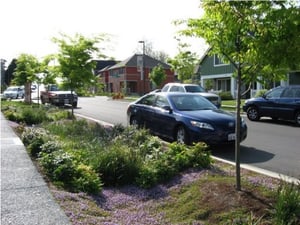 Recently, Paul Harmsen wrote a blog post about Low Impact Development (LID) Implementation in Washington with important dates when the new standards will take effect. While the new standards apply only to Washington for now, other states are certain to follow suit. For many agencies, the new regulations will mean a lot of work added to staff members who already have full plates. Fortunately, we know the requirements are coming, and the best way to streamline and simplify the process is to be prepared.
Recently, Paul Harmsen wrote a blog post about Low Impact Development (LID) Implementation in Washington with important dates when the new standards will take effect. While the new standards apply only to Washington for now, other states are certain to follow suit. For many agencies, the new regulations will mean a lot of work added to staff members who already have full plates. Fortunately, we know the requirements are coming, and the best way to streamline and simplify the process is to be prepared.
Following are some resources and information that will help your agency get ahead of the curve for implementation of LID.
What areas of my agency will be affected?
Those departments that can expect the greatest change include public works, planning, permitting, and building. Parks departments will also be impacted. Public works departments will need to integrate LID into public works projects and stormwater codes. Staff will need to be trained to design, review, and inspect LID projects. Planning and permitting departments will need to integrate LID requirements into development codes and standards. Site plan review processes will need to be updated to reflect LID requirements. Zoning and subdivision codes, clearing and grubbing, parking, and landscape standards will also need to be updated to reflect the new LID standards.
What will my agency need to do?
As you know, modifying codes and standards can be a time-consuming process. The earlier you start, the better. Here are some of the key steps your agency will need to take:
- Identify project team and lead staff for ordinance work
- Determine staffing needs and impacts for implementing requirements
- Determine budget needs and impacts to support transition and ongoing implementation
- Facilitate interdepartmental coordination when incorporating these new LID requirements to ensure consideration of the most effective and efficient organizational approach.
What resources are available for my jurisdiction?
Many resources exist and others are in development to assist local governments with their transition to adopting the new requirements. Here are a few of the resources available to help your agency prepare.
Planning-Association of Washington Cities offers resources for planning for LID. Available at:
http://www.awcnet.org/TrainingEducation/LowImpactDevelopment/PlanningforLID.aspx
-State of Washington Department of Ecology. Legislate, Integrate & Plan LID. Available at:
http://www.ecy.wa.gov/programs/wq/stormwater/municipal/LID/Resources.html
Code Integration-Integrating LID into Local Codes: A Guidebook for Local Governments. Designed to help local government staff integrate LID requirements into local codes and standards. Available at:
http://www.psp.wa.gov/downloads/LID_Guidebook/20120731_LIDguidebook.pdf
-Model ordinances created as part of the development of the local codes guidebook. Model ordinances developed for 1) Grading, land-clearing, and tree cutting; 2) Off-street parking; 3) Planned unit development and; 4) Site assessment. Available at:
http://www.psp.wa.gov/LID_GLG.php
Additional Resourceshttp://www.ecy.wa.gov/programs/wq/stormwater/municipal/phaseIpermit/phipermit.html
http://www.awcnet.org/portals/0/documents/lid/FactSheet1LIDComing.pdf
http://www.awcnet.org/TrainingEducation/LowImpactDevelopment/Toolsresources.aspx
While Washington’s new regulations will require a lot of work to implement, there are already a variety of useful tools available to help your agency get started. If you can get ahead of the curve, you can avoid excessive amounts of work as the deadline for your agency approaches.
What do you think about Washington’s new LID requirements? How is your agency preparing for implementation of LID? Please leave a comment below.
Photo credit: Wikipedia

